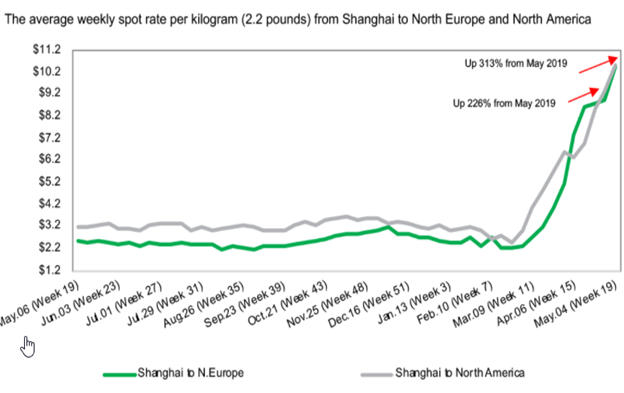- Categories
- Products
- Industries
- Aerospace Micro Welding
- Automotive
- Battery
- Defense and Military
- Dental
- Electronics
- Energy and Utilities
- Filtration and Mesh
- General Industrial
- Government
- Heating and Cooling
- Hobby
- Jewelry
- Laboratory
- Lighting
- Medical
- Motors and Coils
- Oil and Drilling
- Orthodontics
- Plastics Molds and Dies
- Research and Development
- Semiconductor
- Solar
- Thermocouple
- Applications
- Actuators
- Aerospace
- Automotive
- Battery Welding
- Brachy Seeds & Capsules
- Coil Termination
- Defense & Military
- Dental & Ortho
- Electrical Connections & Fuses
- Electronics
- Energy & Utilities
- Eyeglass Frames
- Filtration & Mesh
- General Industrial
- Government
- Hearing Aids
- Heating & Cooling
- Heating Elements
- Hobby
- Honeycomb
- Hotbar Reflow Soldering
- Hybrid Microwave Devices
- Instrumentation
- Jewelry
- Laboratory & R&D
- Lighting - Bulbs - Tubes - Lamps
- Medical Surgical Tool Repair
- Mold & Die Repair
- Motors & Coils
- Nuclear Fuel Rods
- Personal Protection Equipment
- Projection Studs
- RF Devices
- Solar Panels & Cells
- Specialty Metals
- Strain Gauges
- Thermo-compression Bonding
- Thermocouple Welding
- Wire and Ribbon
- Resources
- Home
- Products
- Industries
- Applications
- Resources
- Videos
- Compare
- ACH accounts
- Sunstone Micro Welding
- Why Sunstone Has Inventory When the World's Supply Chain is Struggling
Why Sunstone Has Inventory When the World's Supply Chain is Struggling

By Judd Hansen
VP Operations
“When will my order arrive?”
Have you heard these words lately? Or have you said them yourself as you wait for an order that is days or even weeks later than originally estimated? The global pandemic has created a ripple effect that is impacting supply chains in every corner of the globe, generating longer lead times, higher costs, workforce shortages, and inflation worries.
Sunstone faces the same supply chain challenges as other manufacturers. The company is frequently searching for new vendors since many long-time vendors are not able to provide supplies as they have in the past. Not only has Sunstone changed vendors, but changed part designs as well. In some instances, it was easier to change product designs to fit an available part rather than chase down current parts that have become difficult to find.
Purchasing more inventory has been another way for Sunstone to overcome some of these shortages. While more inventory equates to a bigger production investment, the trade-off is worth the added expense because of the uncertainty of availability. More inventory on hand has proven to be a healthy choice for our company and for our customers. While some companies are struggling to fulfill inventory, Sunstone has stock on hand for much of its product line.
Sunstone also benefits from it’s “make it locally” approach to manufacturing (“locally” defined as made in the USA). Logistically and financially speaking, it’s not possible to manufacture a Sunstone welder without importing some parts. Roughly 10% of a Sunstone welder’s components come from outside the US, all of those parts being electronic in nature. The bulk is manufactured in our facility or sourced locally, a fact that is significantly benefitting us and our customers during unprecedented supply chain challenges.
What’s Happening to the World’s Supply Chains?
Working with one of Sunstone’s valuable vendors, I can provide the following information that pinpoints the causes of so many delays and difficulties other companies may be experiencing trying to find inventory:
- Shipping Container Shortages. The total transit time for a container from China to the United States Midwest or East Coast is now 75 days, a significant increase! As a result, the turnaround time to load, ship, unload, and return an empty container back to its origin is 150 days—double what it was in 2019! The increased turnaround time effectively removes half the container capacity between the US and China. Simply put: There’s not enough containers to meet the demand.
- Port Delays. Ports in the United States and Asia are busier than they were in 2019. The port of Los Angeles, for example, is operating at 160% of 2019 capacity. Concurrently, COVID has shrunk the workforce. Thus, more ships are arriving at ports but there are fewer people to load or unload the ships. The current wait time for a berth on the West Coast is more than 15 days. As I write this, 65 ships lie at anchor off Los Angeles waiting for a spot to open. And every ship waiting is another ship not transporting. As a result, ships sitting at anchor have removed 18% of the global shipping capacity.
- Rail Yard Delays. The current rail infrastructure in the United States does not have the capacity to take on additional volume. Further, the demand for empty containers is so high that the steamship lines won’t allow containers to leave the port. Thus, containers destined for Dallas, that have always moved by rail from Los Angeles, must now have its contents unloaded in Los Angeles. The contents of the container are moved to a tractor trailer, and then the trailer is loaded onto a train. The labor shortage prolongs the loading/unloading process. Regardless, the railroad lines are unable to handle the increase, creating further delays. Many rail yards are refusing freight rather than have it sit for weeks waiting for available space, whether the freight is in a container or trailer.
Export Conditions from China to the United States
In addition to container shortages, port delays, and insufficient rail capacity, these current conditions in China are contributing to shipping delays:
- No Lunar New Year Holiday in 2021. China manufacturing did not completely shut down for two weeks for the Lunar New Year in 2021, as has been the normal practice. The two-week break, and full month of limited operations, has historically allowed freight carriers and port operations to catch up and clear their backlogs. But factories worked through the holiday to meet demand, adding to the backlog.
- Container Shortages Spiking Shipping Costs. The lack of empty containers has resulted in uncontrolled, booming container costs. Shipping costs for a 20-foot container have increased from $1,500 in 2019 to $10,000 in 2021. Shipping costs for a 40-foot container have increased from $4,000 to $25,000. Of course, those costs are passed on to the consumer.
- Container Ship Troubles. Container ships have a schedule to keep. Sailings are being cancelled due to a lack of containers. When a sailing is cancelled, all booked containers must be moved to the next available ship, which may already be fully booked, resulting in a cascading effect of cancelled shipments. These cancelled “blank” sailings result in freight forwarders not being able to move freight out of their warehouses, eventually resulting in an inability to pick up new freight.
- Government Policy Toward COVID. China is aggressive in mitigating the impact of positive COVID tests to port employees. The major container port of Ningbo, the largest container port in the world, shut down for an entire week after a single COVID case was reported, despite dozens of ships waiting to load and unload cargo.
- The Busiest Time of the Year. Fall is historically the busiest time shipping volume. Every retailer is racing to make sure they have inventory ready to fill holiday orders. A small number of retailers in the US contracted their own container ships and unloaded at smaller ports to make sure their inventory got to stores in time for the holiday season.
Why Not Just Switch to Air Freight?
With all the ocean shipping challenges, it only makes sense that one would look to other types of transportation, such as air freight. But here, too, manufacturers are running into the following challenges:
- Air Freight Costs Have Skyrocketed. Increased demand and lower capacity have increased the cost of air freight from $4 per kilogram in 2019 to $12 per kilogram. To put that in perspective, a shipment from China to the United States of two pallets weighing 800 kilograms from would cost approximately $2000 to ship by sea, $9600 by air. As a result, air freight offers no solution to the current supply chain issues.
- Flights Between the US and China Have Decreased. Passenger flight volume to and from Asia is down 75% from 2019 levels, removing 25% of all air freight capacity between the two countries. That fact leads to this question: Why not use more cargo planes? Cargo planes are built specifically for that purpose and are ordered years prior to delivery. A new plane ordered today would not be delivered until 2024. Can passenger planes be converted to cargo planes? Yes, but the cost to convert a passenger plane is several million dollars. And when the current supply chain challenges end, you would want to revert the plane to a passenger plane, adding even more cost.
- High-Value Products Monopolizing Air Freight Capacity. High-value product that historically have been shipped by sea are being switched to air freight. The higher cost of these items means the manufacturer can absorb the higher shipping costs. But, as a result, this switch has increased the demand and decreased availability of air freight.

The Sum of All Challenges
The supply chain, as it literally suggests, is a long stream of connected, interdependent steps necessary to deliver a widget from one country to another. The pandemic has clearly illustrated to all of us the extent of the interconnectedness and the fragility at the same time. Expert economists predict the backlogs will be worked out, that a sufficient number of empty containers will make their way back to China, and that COVID will have a decreasing effect on labor shortages. Some say the latter half of 2022 will see shipping charges and delays decrease to pre-pandemic levels.
Until then, consumers will continue to experience strange shipping adventures and higher costs. Thanks to quick thinking on the part of Sunstone’s team and its dedicated vendors, Sunstone is fortunate to have most inventory on hand to meet the needs of its customers.
What are You Welding Today?
Let Sunstone's team of micro welding experts help you determine which type of welding technology will deliver the best results. Call or text +1 801-658-0015 or shop our welders online today.

